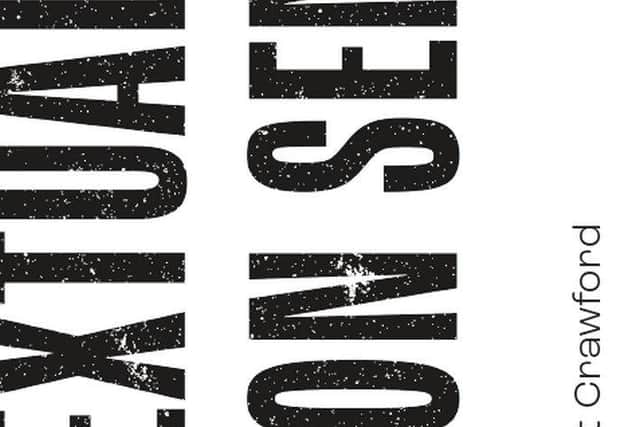Book review: Textual Non Sense, by Robert Crawford


In the late 1990s and early 2000s I used to receive a slightly samizdat broadsheet called Depression News. It was scurrilous and scabrous, but at the same time very funny indeed, parodying theology, academia, contemporary Scottish literature, politics, the Broons, football and for some reason the island of Unst (famous for its wife-fighting arena). I do now know the perpetrators but have signed a non-disclosure agreement never to reveal their identities. But it came back to me – I still have an archive of them all – when I read Robert Crawford’s Textual Non Sense.
Crawford is an acclaimed poet, a translator of the Greek poet Simonides and neo-Latin Scottish poetry, a biographer of Burns and TS Eliot, the author of a history of Scottish literature from the earliest times to the present day, and a professor whose work includes Devolving English Literature, a book which had an immense impact on me. Therefore few people could be better placed to cock a snook at academia. He does so in a way which is seriously funny, in that it is serious as well as funny. I have to say – and I suppose I am in on the in-jokes – that I laughed and laughed.
Advertisement
Hide AdTextual Non Sense is divided into four sections, but proclaims itself “a four part trilogy”, with shades of Douglas Adams’ The Hitchhiker’s Guide To The Galaxy sequence. The blurb on the back describes it as “Absolutely the most important book of our era”, and the quote is attributed to one “Virginia Wool”. Absent letters will be significant anon.


The opening section is entitled “Introduction, Preface and Prolegomenon”. Alert readers will realise that these are effectively synonyms, so piling them up together gives an air of absurd portentousness. It satirises the language of academic criticism – the epigraph, attributed to one “Roland Butter” captures this perfectly: “Operating in the zone of unstable convergences between post-haptic theory and cognitive neuroscience, ‘textual non sense’ presents a vertiginously disruptive challenge to the verbal semiotic; omnipresent, yet always elusive…” Take it from me, I have read books not even a country mile distant to this. What it does do, however, is present a brief and witty history of the study of Eng Lit, and diagnoses with acuity the fact that “English Literature” as an academic subject as always had something of an inferiority problem. Hence, one assumes, the need to be scientific, grandiloquent and obtuse. This is true. I remember a classics don at Oxford saying to me “Oh, you study English? That’s what we classicists read in the bath”.
What Crawford skewers is the po-faced nature of a lot of criticism, and a sense that “no one can name a comic literary critic”. The following chapters are, as he says “mischievous and minimalist”. “Writers’ Struggle: A Text Book” are jokey, gnomic iterations on the idea that the writer must struggle to achieve greatness. The first gives a flavour of the whole; “Sylvia struggled with Ted talks”. Later entries include “A A struggled with Poo” and “Irvine struggled with heroines”. The typeface changes throughout, and a lot of it reminded me of the lapidary wit of Iain Hamilton Finlay. In Little Sparta there is a tree of the genus betula on which hangs a sculptural plaque that read “Bring Back The Birch”.
The third part is 39 steps – yes, get it – on how to write a bestseller. This is perhaps the most sardonic section of the book, as Crawford takes aim at the publishing industry, creative writing and hype in general. Each section is headed with something relatively banal – “Name”, “Title”, “Publishers”, “Book-Signings” and so forth. But the advice is razor-sharp. On “Editing”, Crawford writes “Never read over your own work. To do so will only confuse you. Always remember you are a bestselling author. Reading is strictly for readers”. These aphoristic moments may be acidic at times, but they are unfortunately accurate.
Finally we have the section devoted to “An AHRBCC – ‘Arts and Humanities Research Bureau Corporation Constellation’ - Big Data Impact Outreach Critico-Creative Research Project” by “Mike Foucault”, called “Two For The Price Of Two”. As well as taking aim and not missing at the bureaucracy surrounding university education, it compiles the comments from anonymised students forced into a 24 hour lock-in seminar. They respond to texts, each of which is missing a letter, or have letters transposed. In this respect it is closer to the comedy of the Oulipo movement in France, but the footnotes to each sketch out an ulterior story, particularly one respondent who, in the spirit of the whole book, refuses to take it all seriously. So we have “My love is like a red, red sore”, “Firs Among Equals” and the glorious “Godbye”.
It is somewhat strange that the idea of Scottish comedy can sometimes seem anathema in our supposedly dour Calvinist nation. From the rambunctious Sir Thomas Urquhart to Compton Mackenzie to Scot Squad there is a pomposity bursting propensity in Scottish humour. Crawford is a worthy heir indeed to that tradition.
Advertisement
Hide AdTextual Non Sense, by Robert Crawford, Boiler House Press, £12.99
A message from the Editor
Thank you for reading this article. We're more reliant on your support than ever as the shift in consumer habits brought about by coronavirus impacts our advertisers.
If you haven't already, please consider supporting our trusted, fact-checked journalism by taking out a digital subscription at https://www.scotsman.com/subscriptions